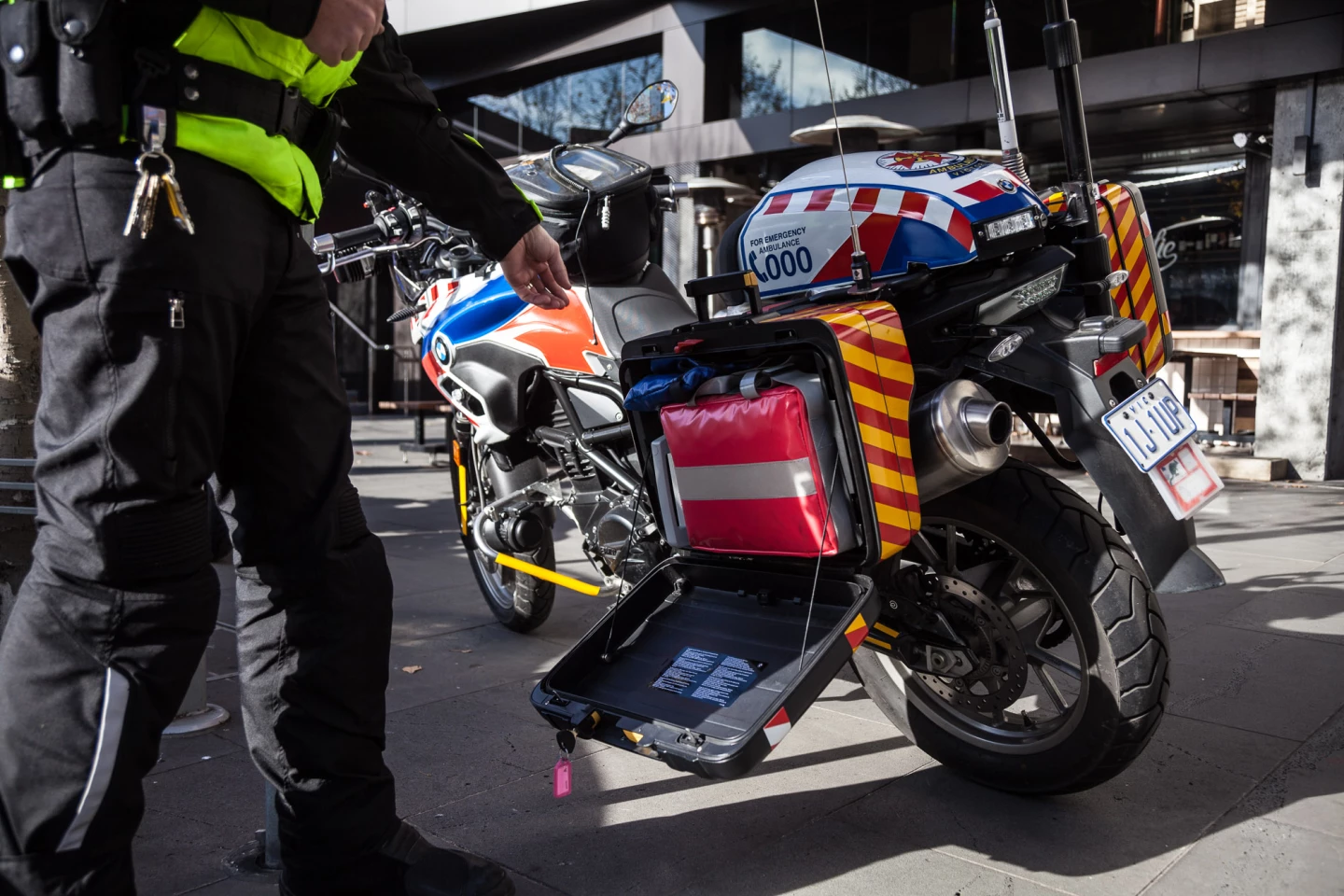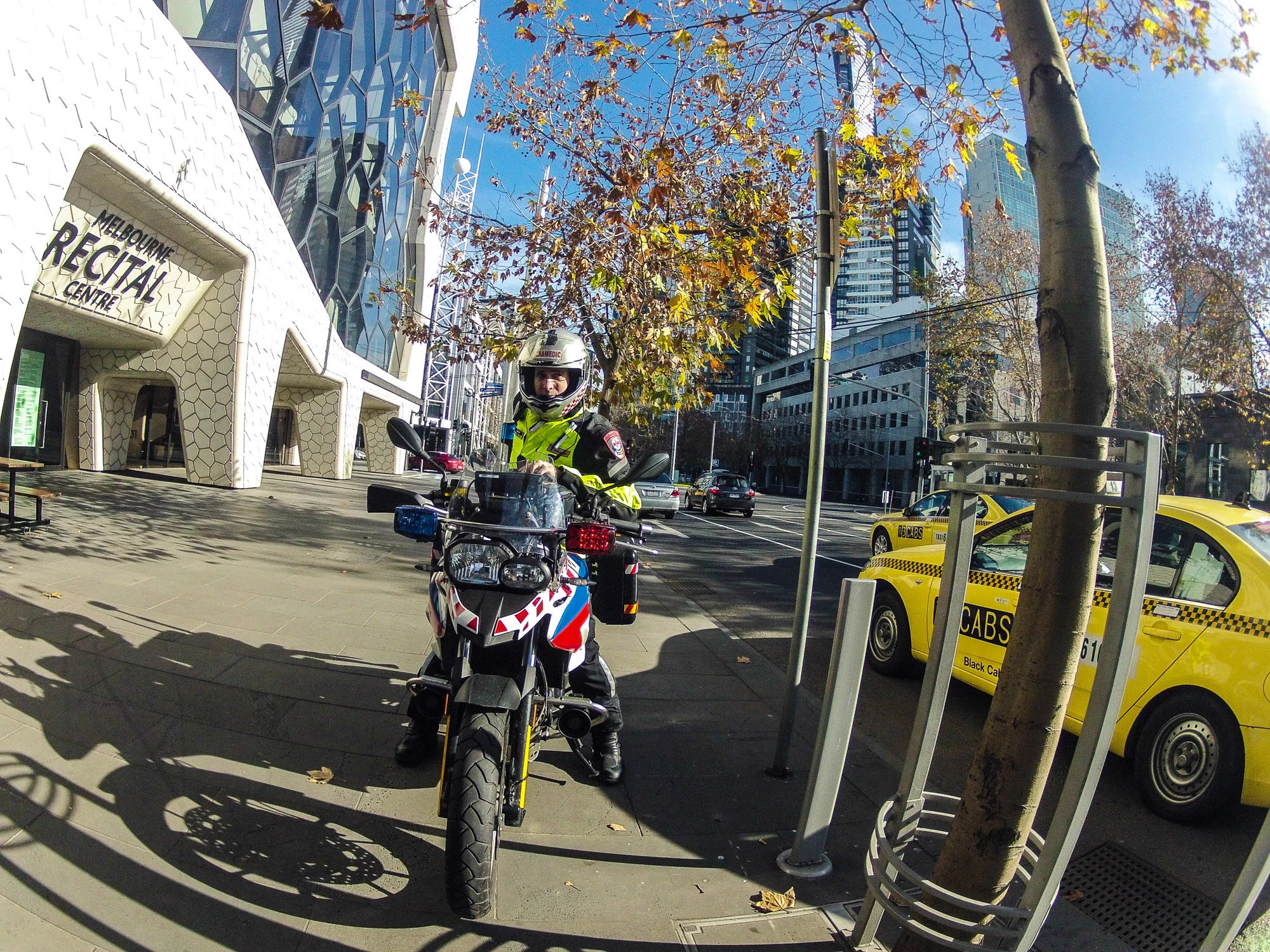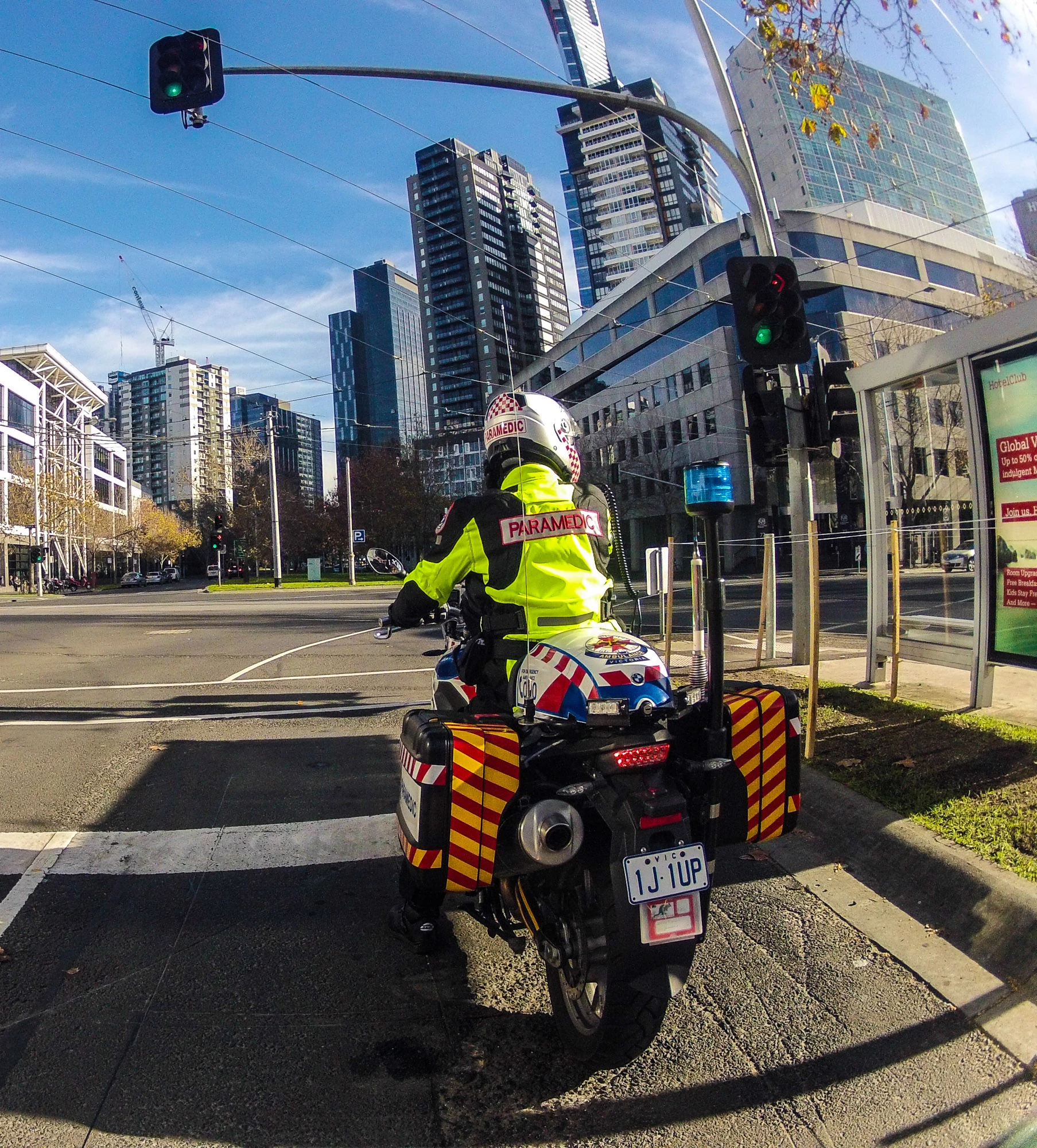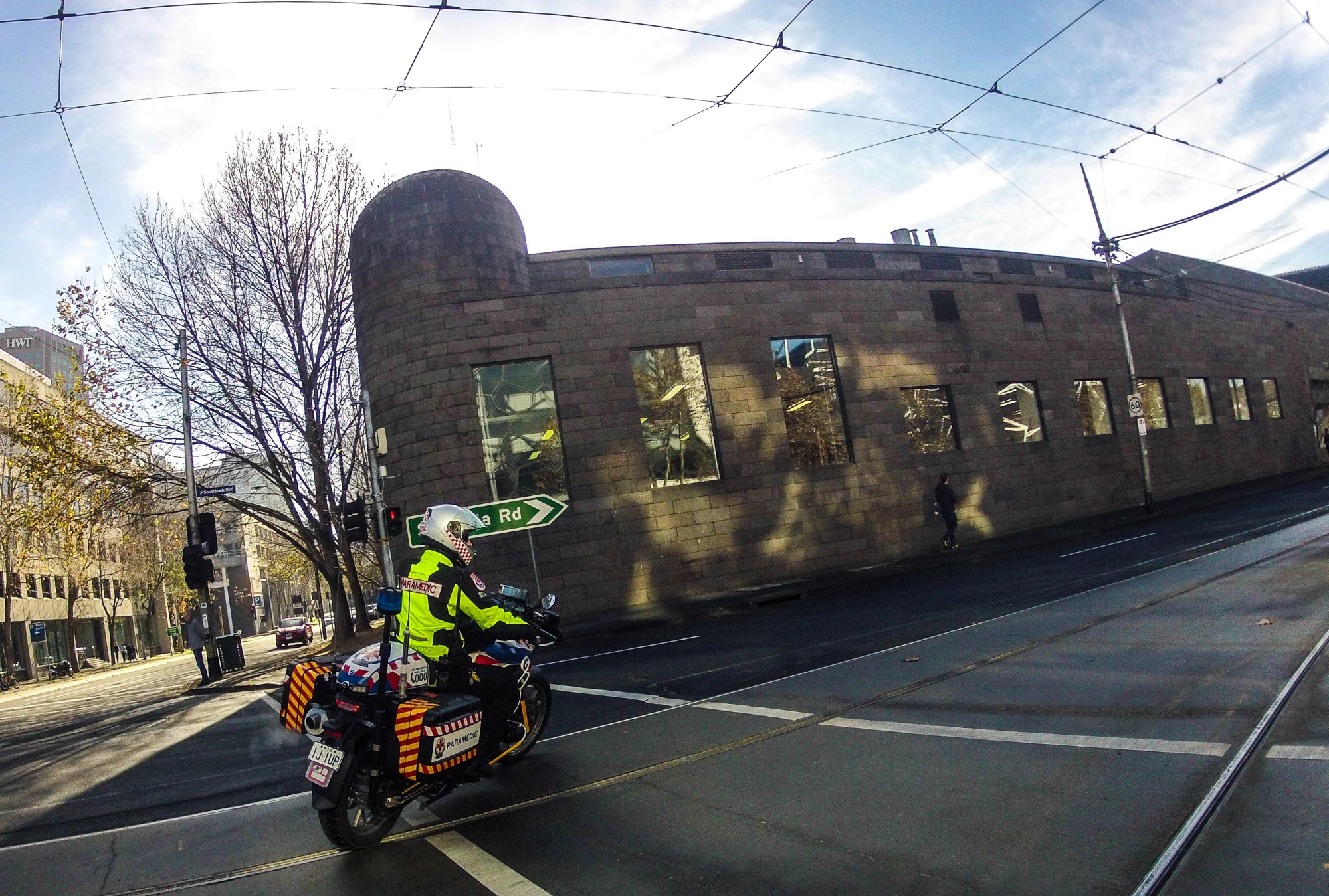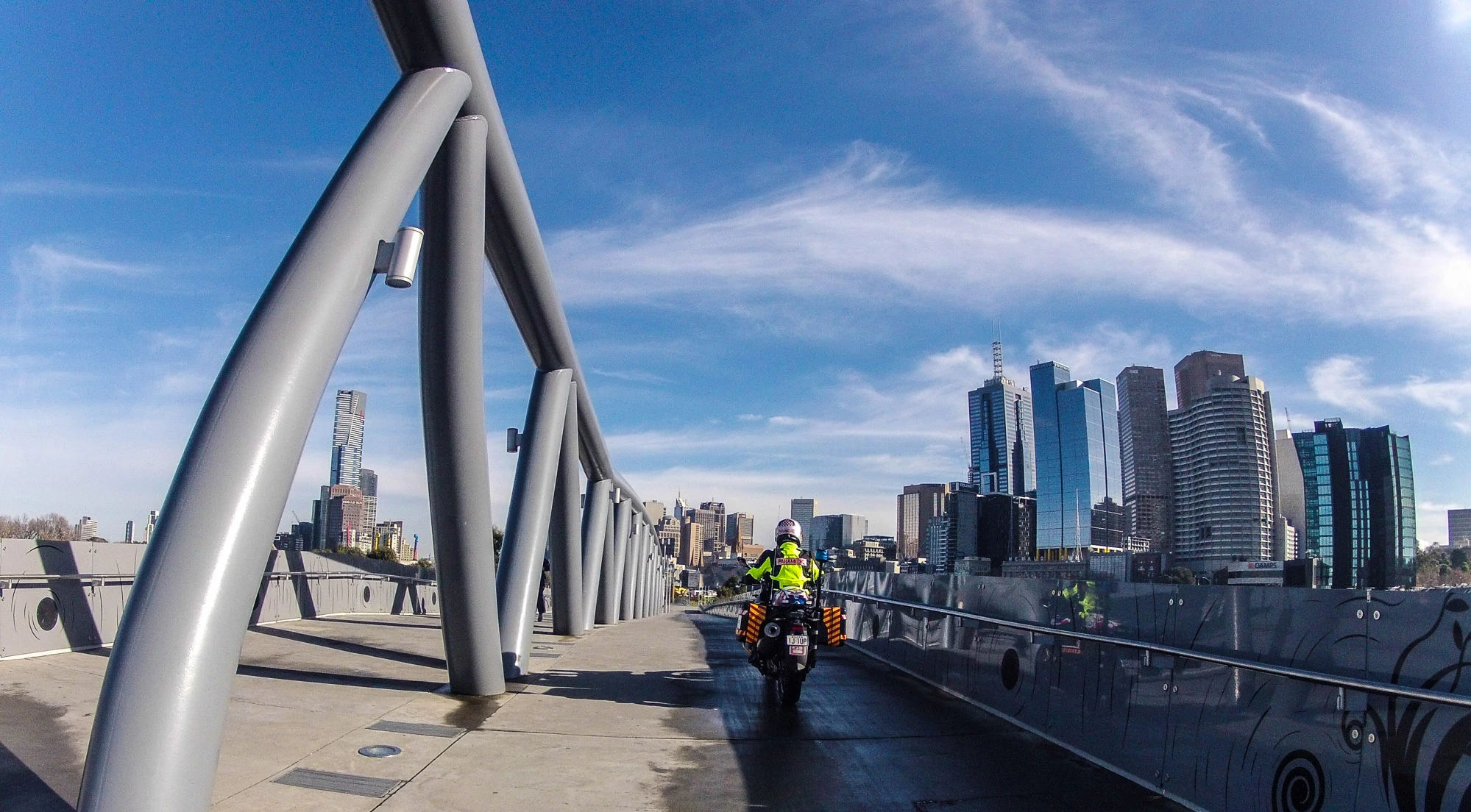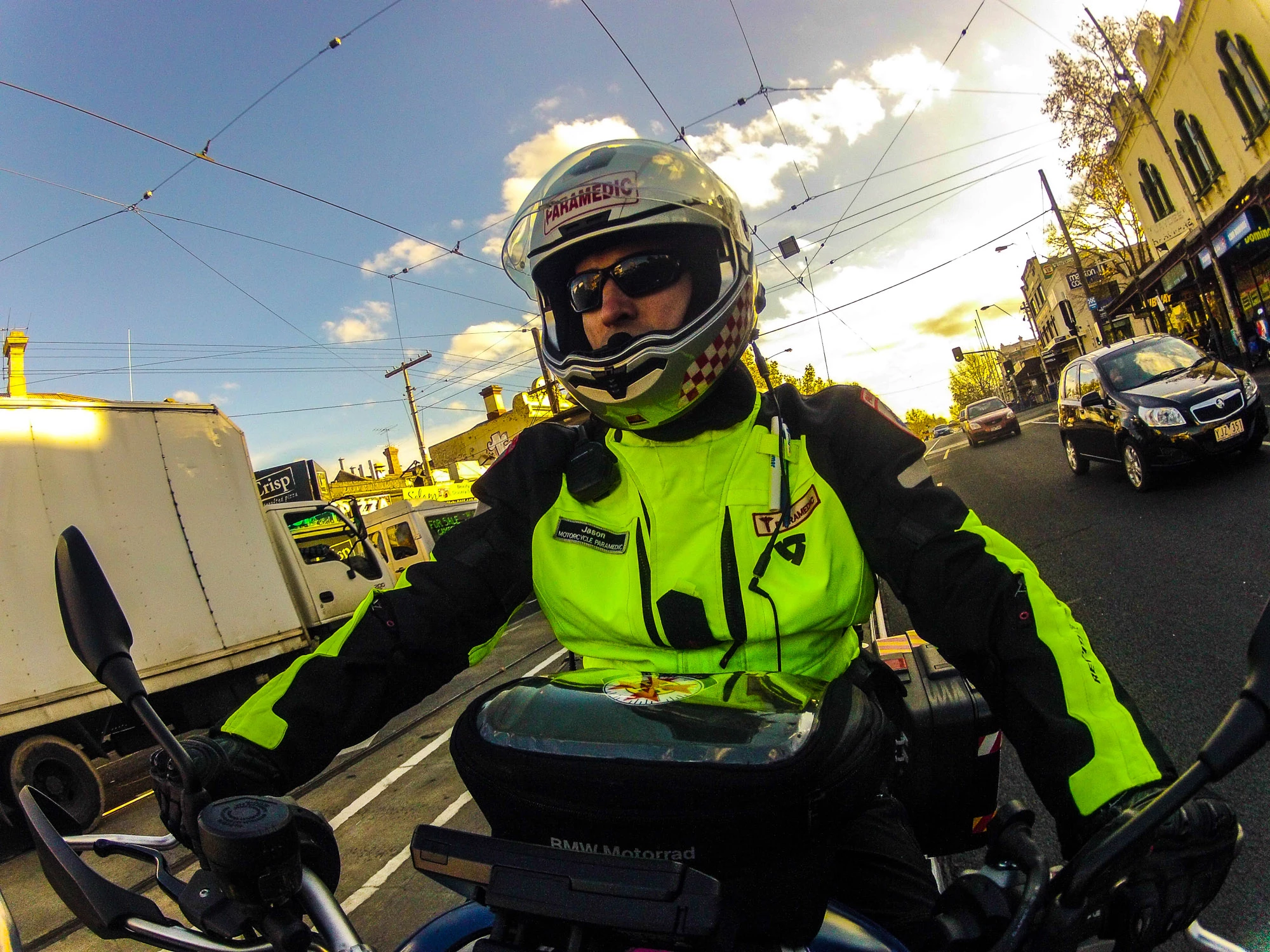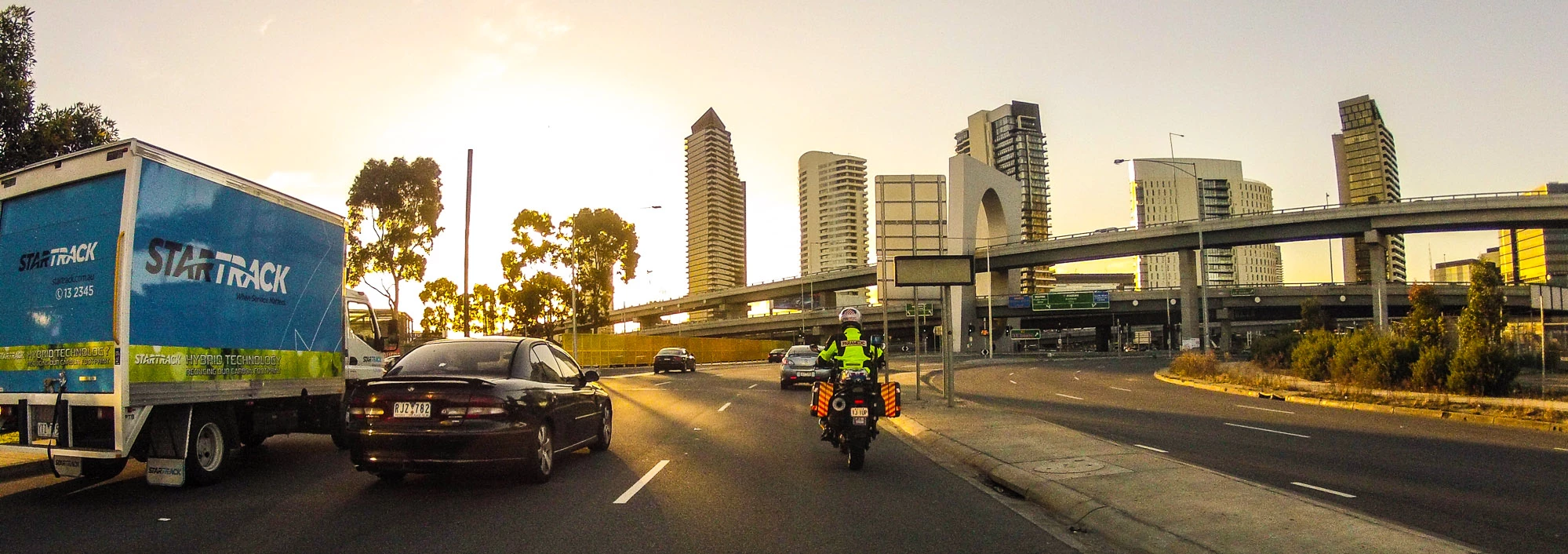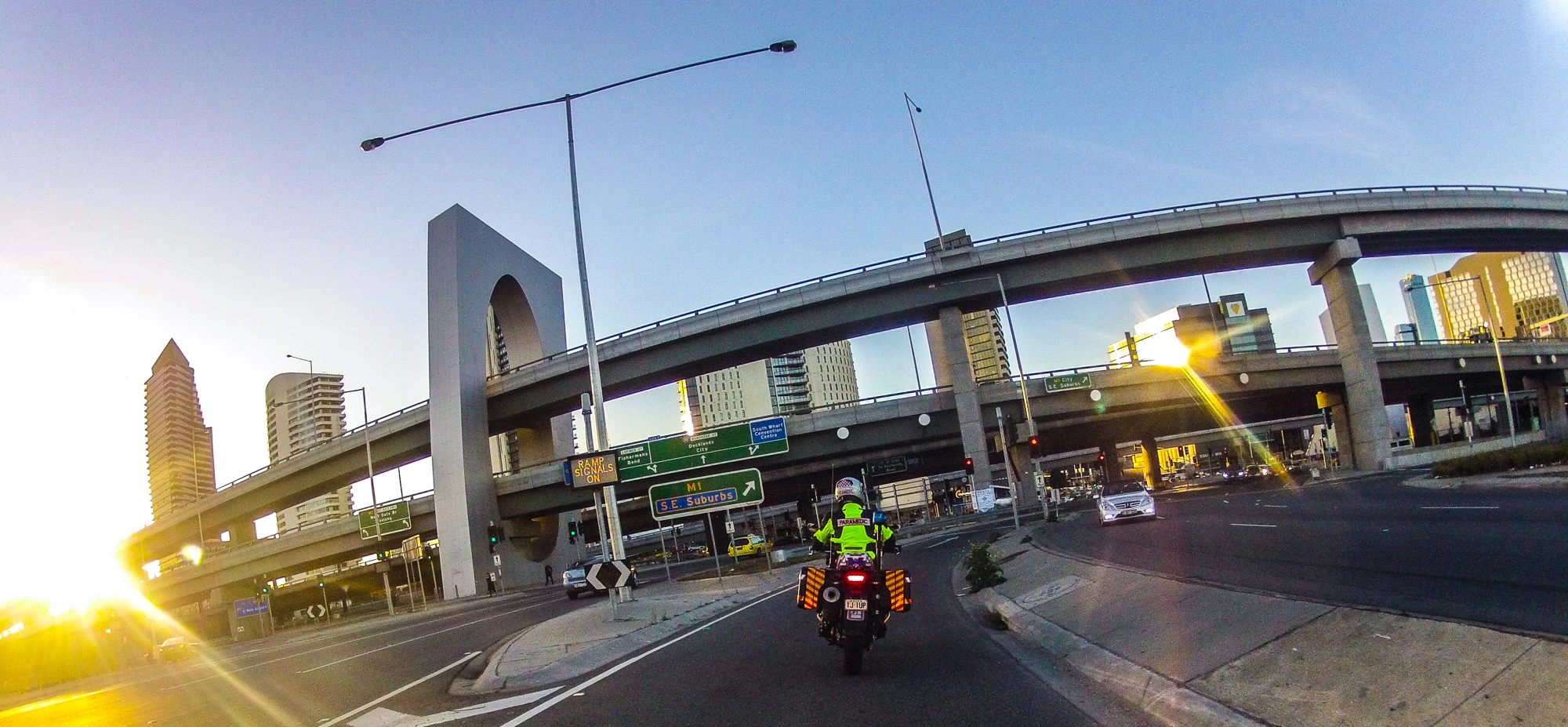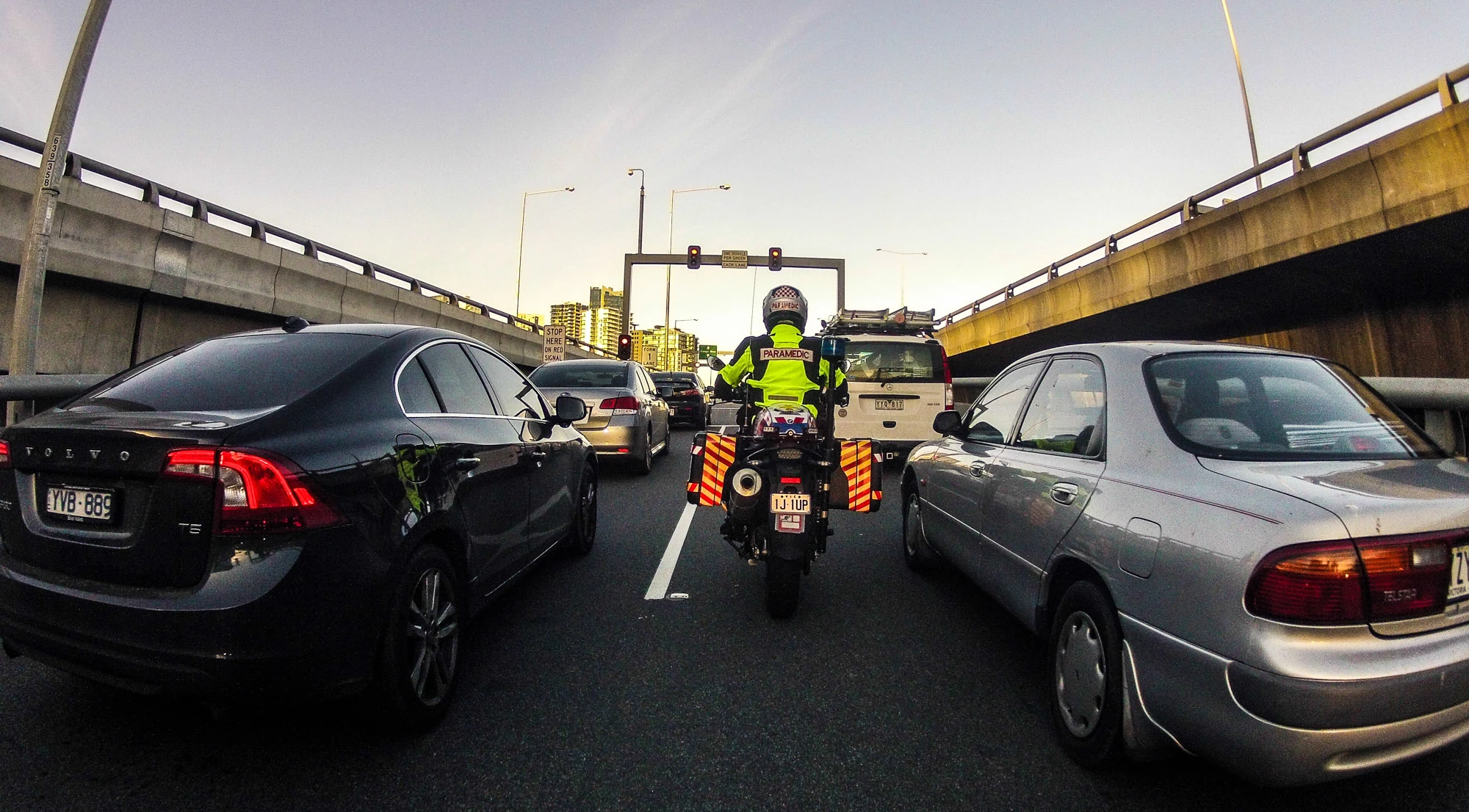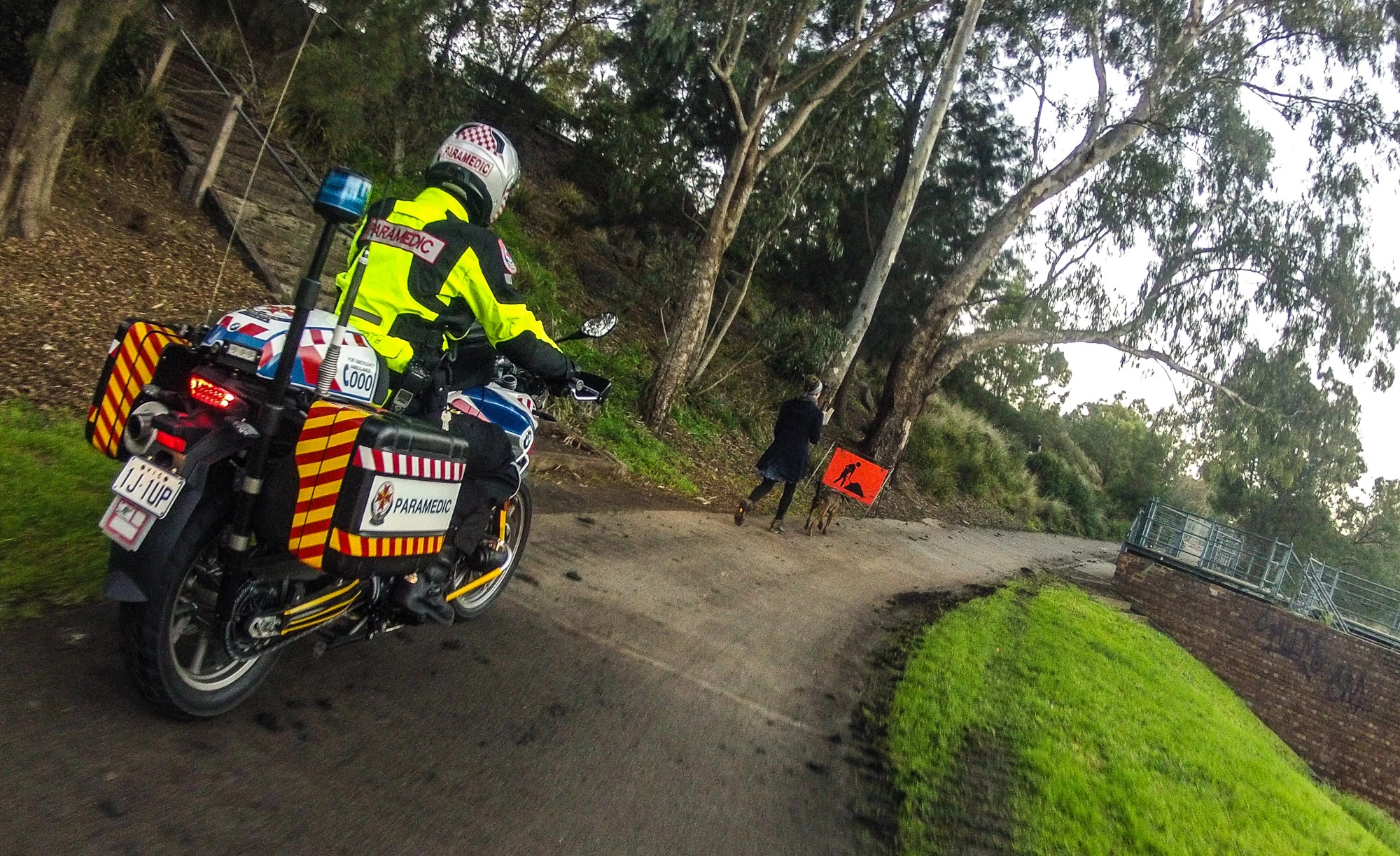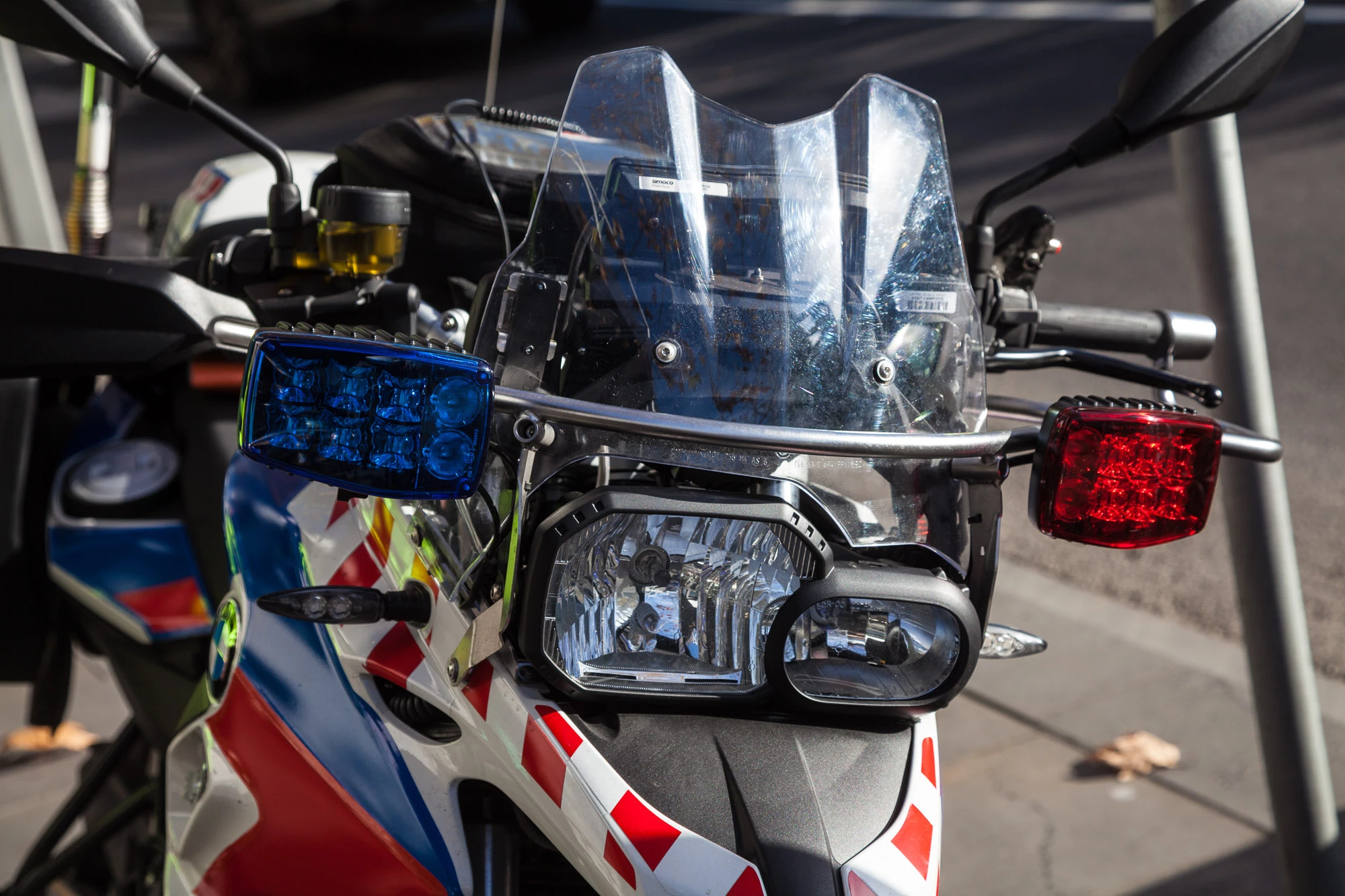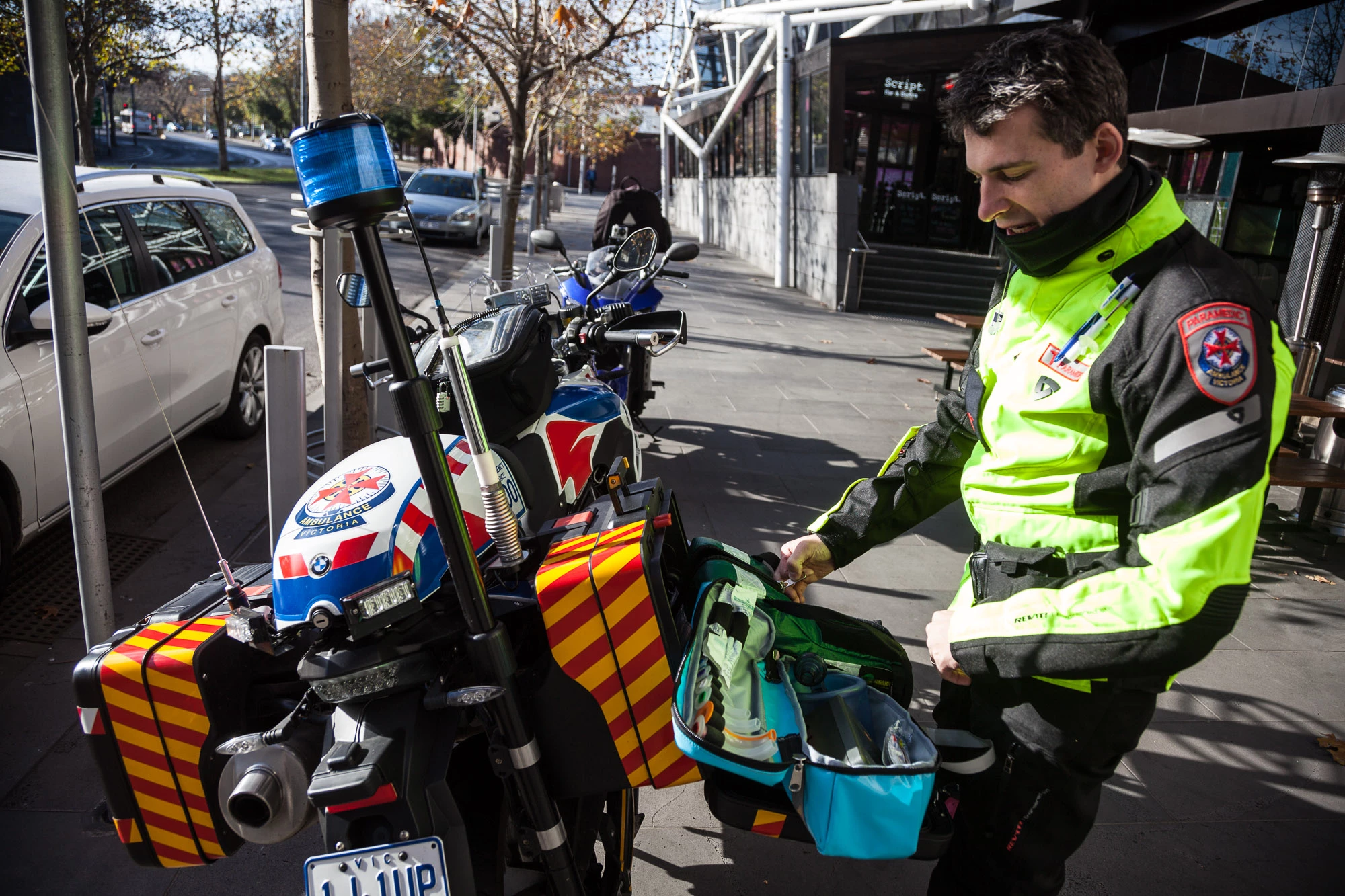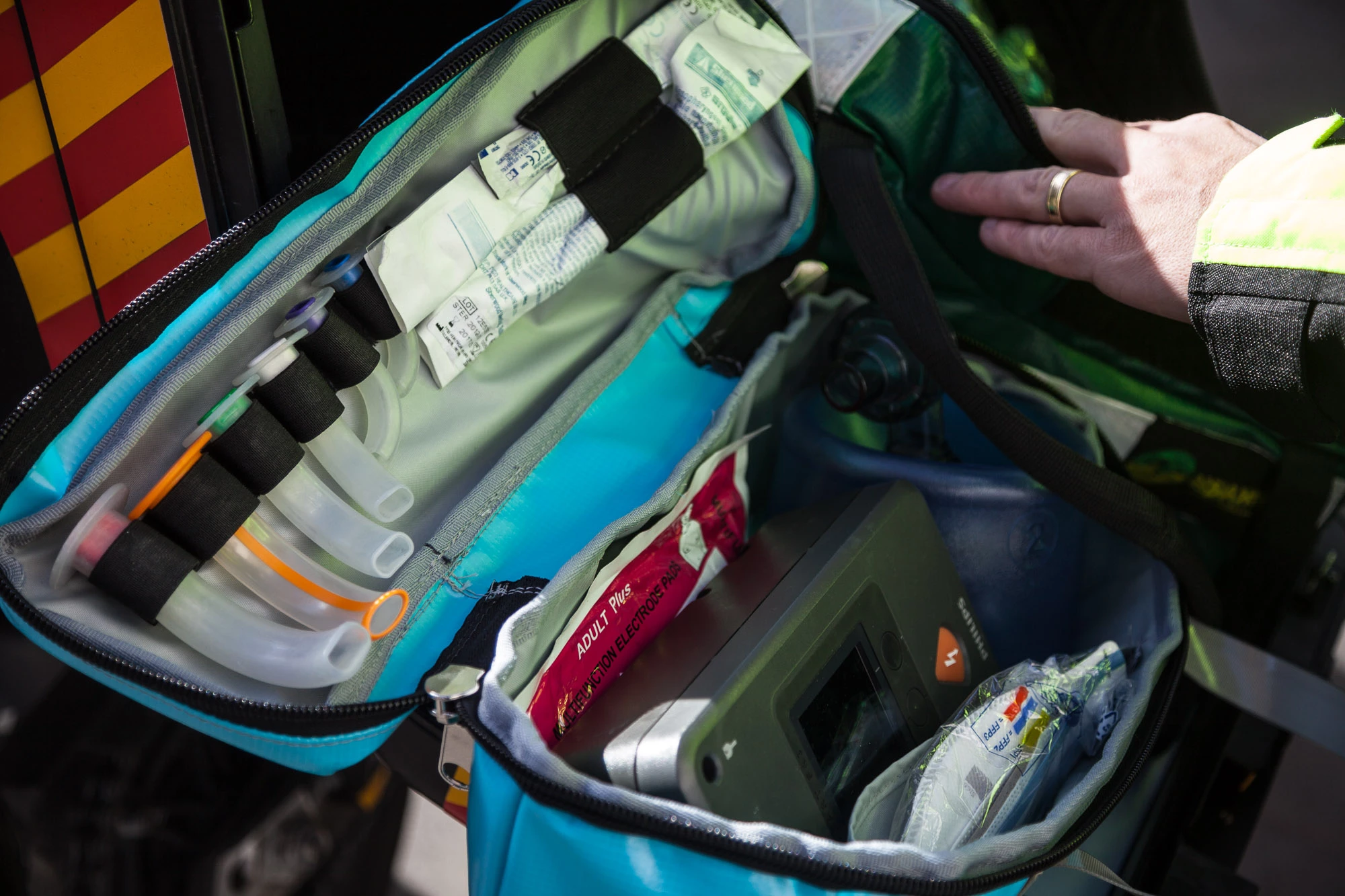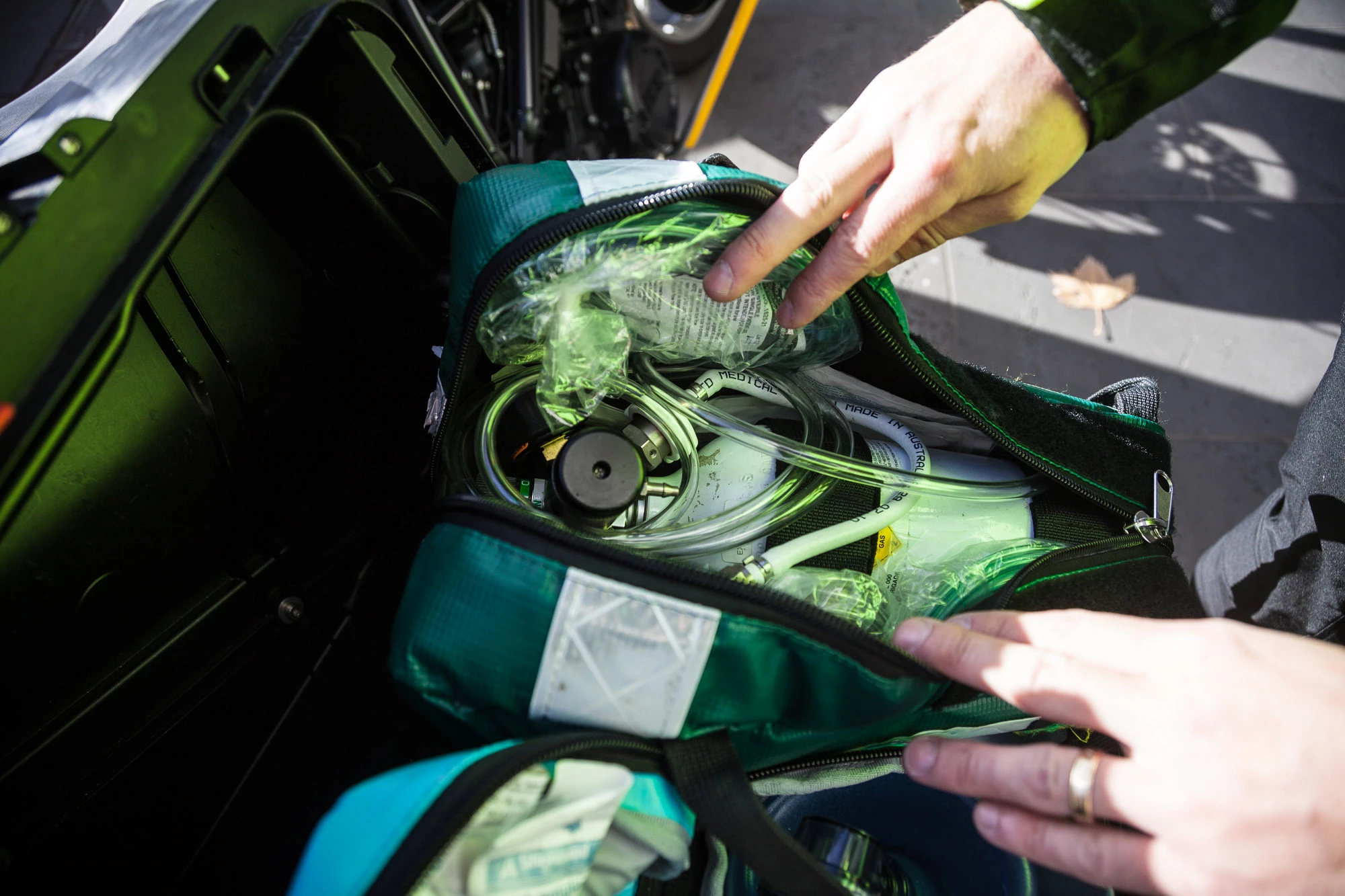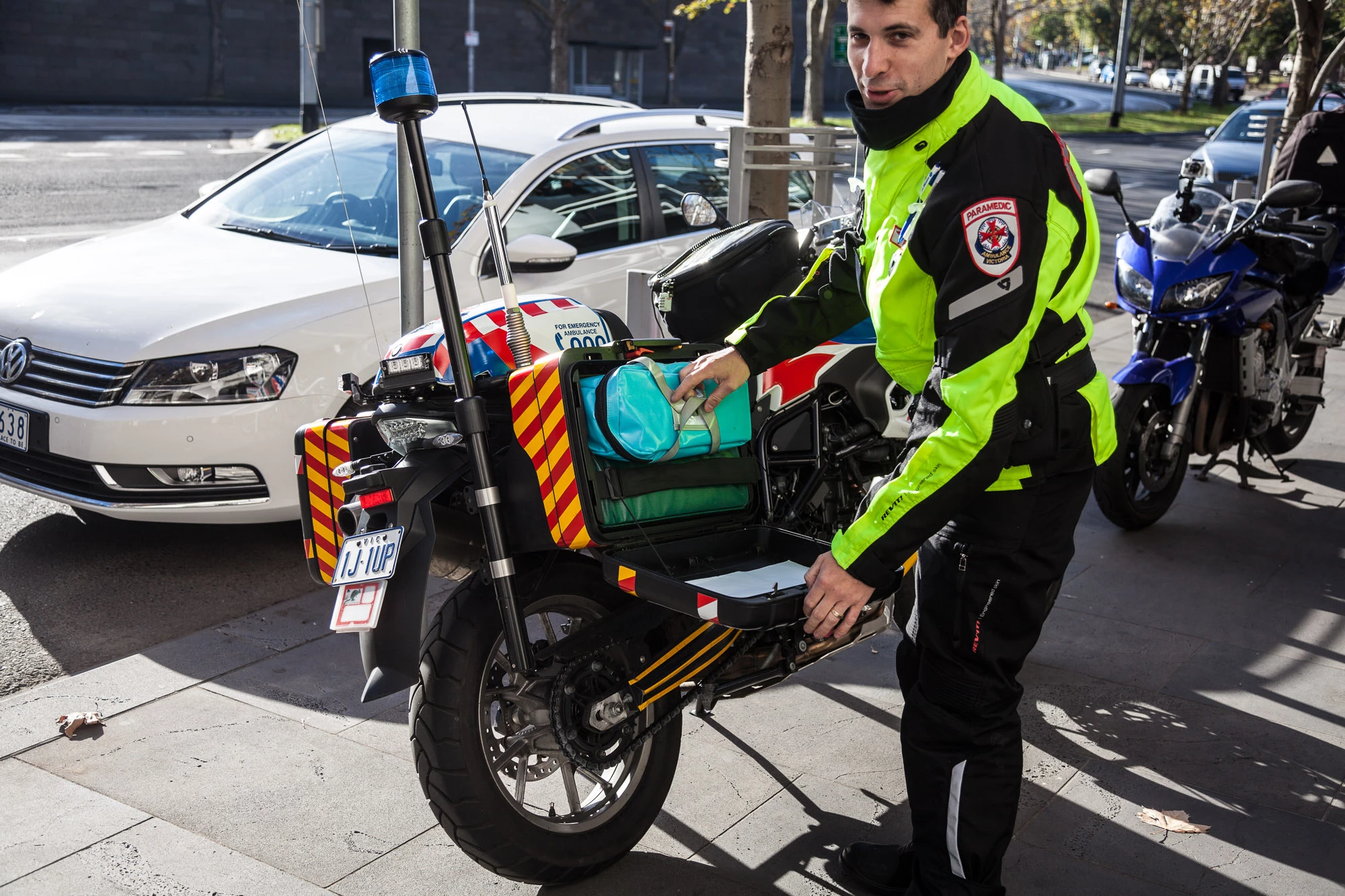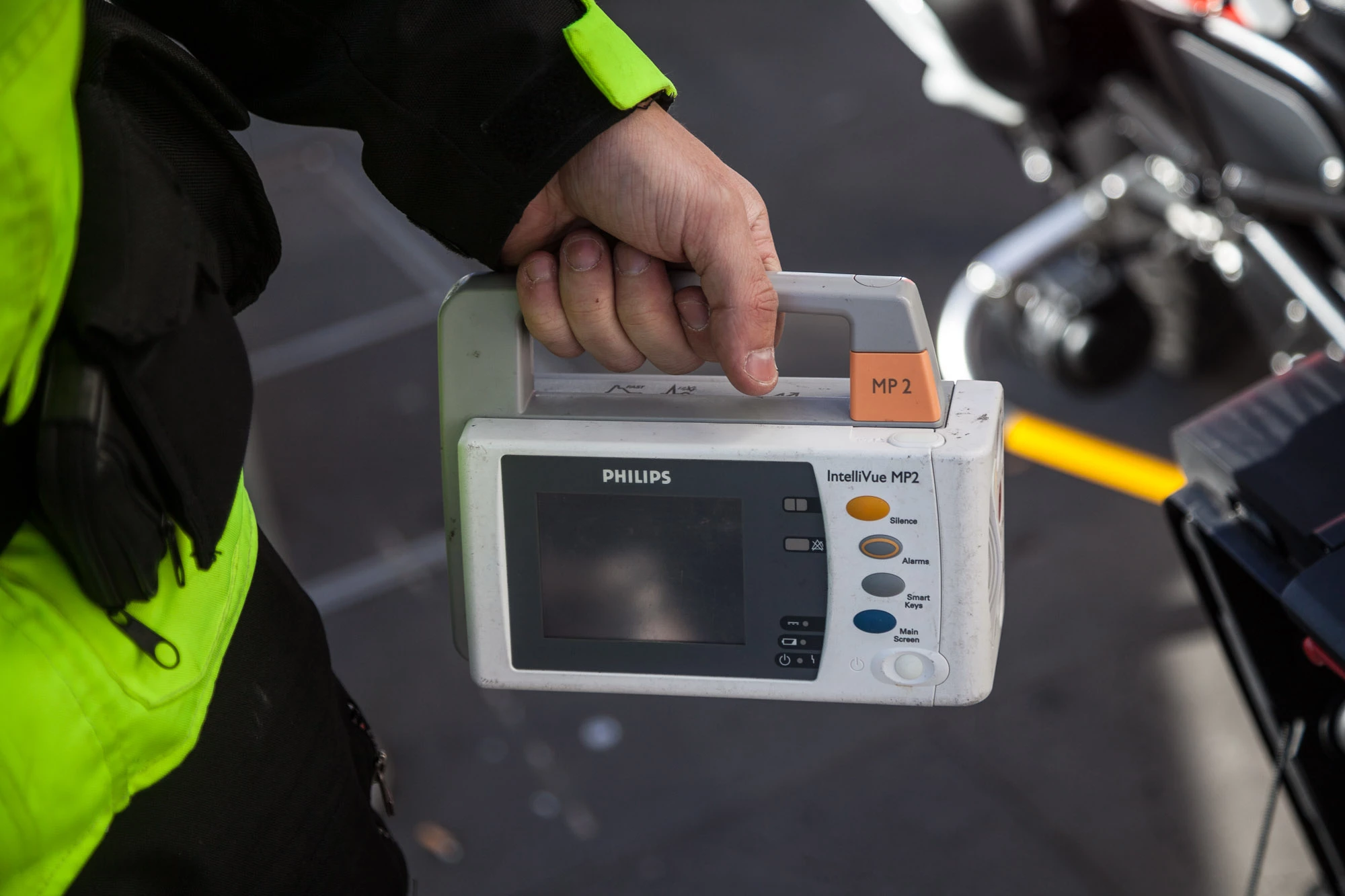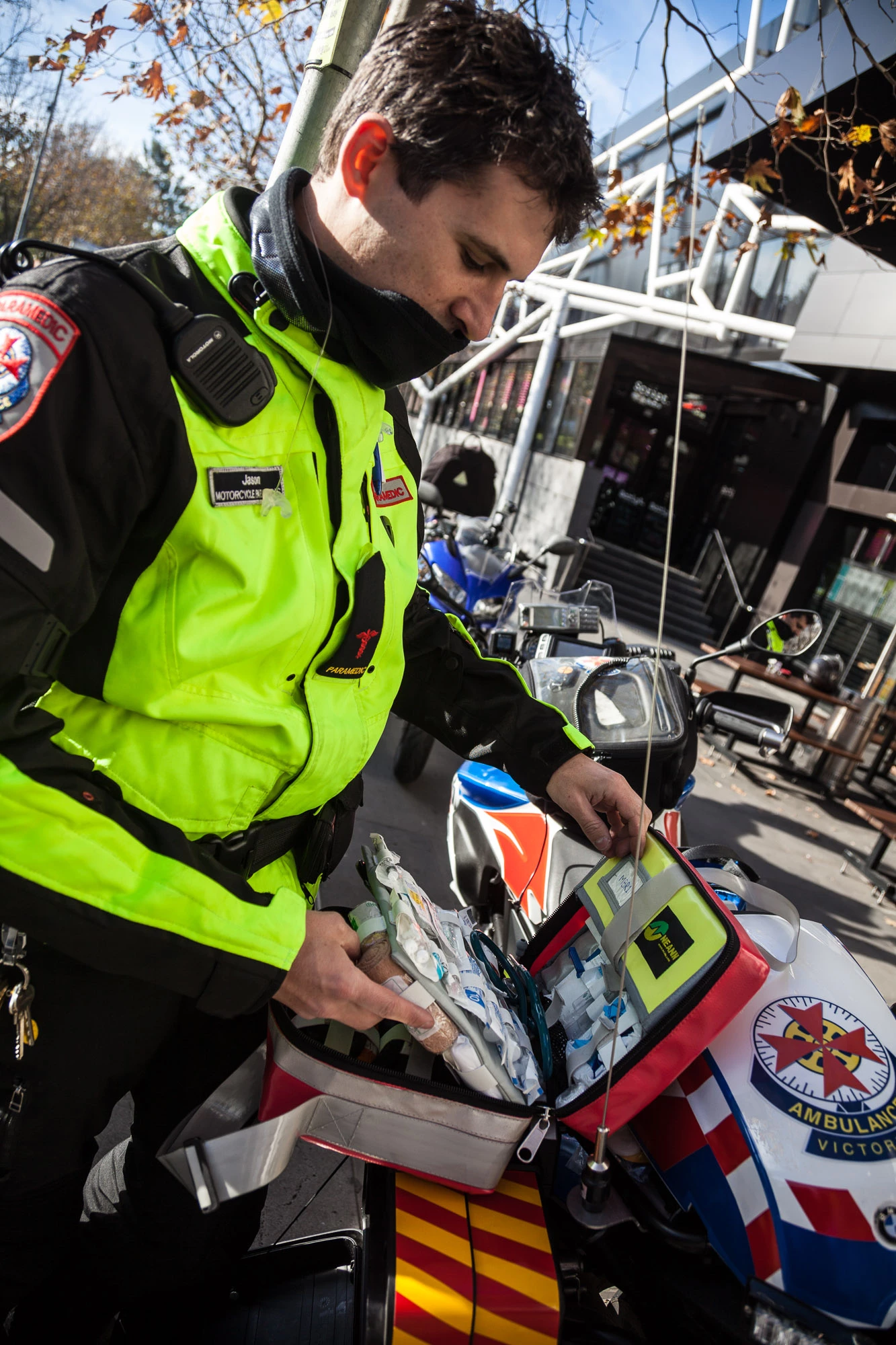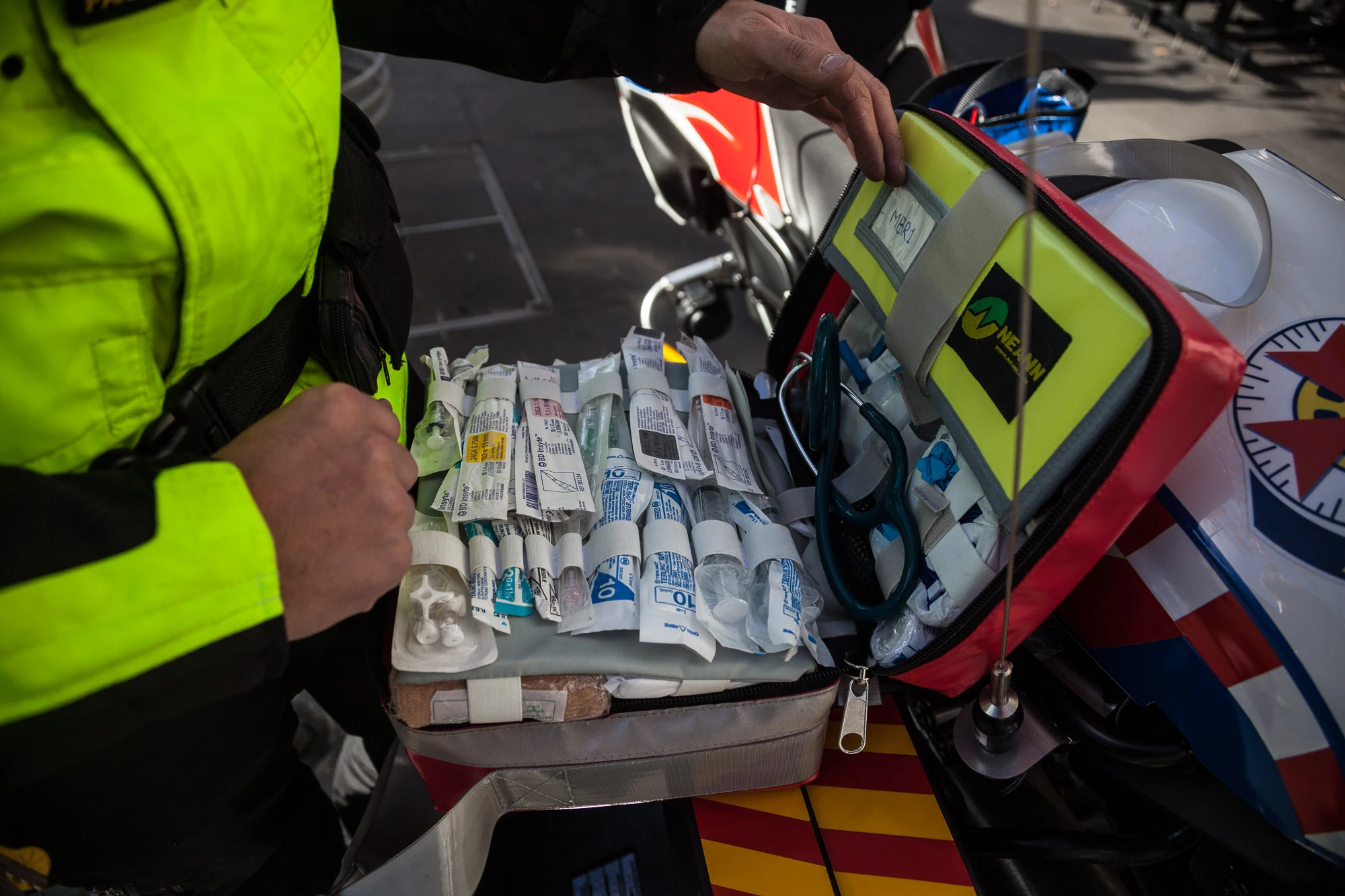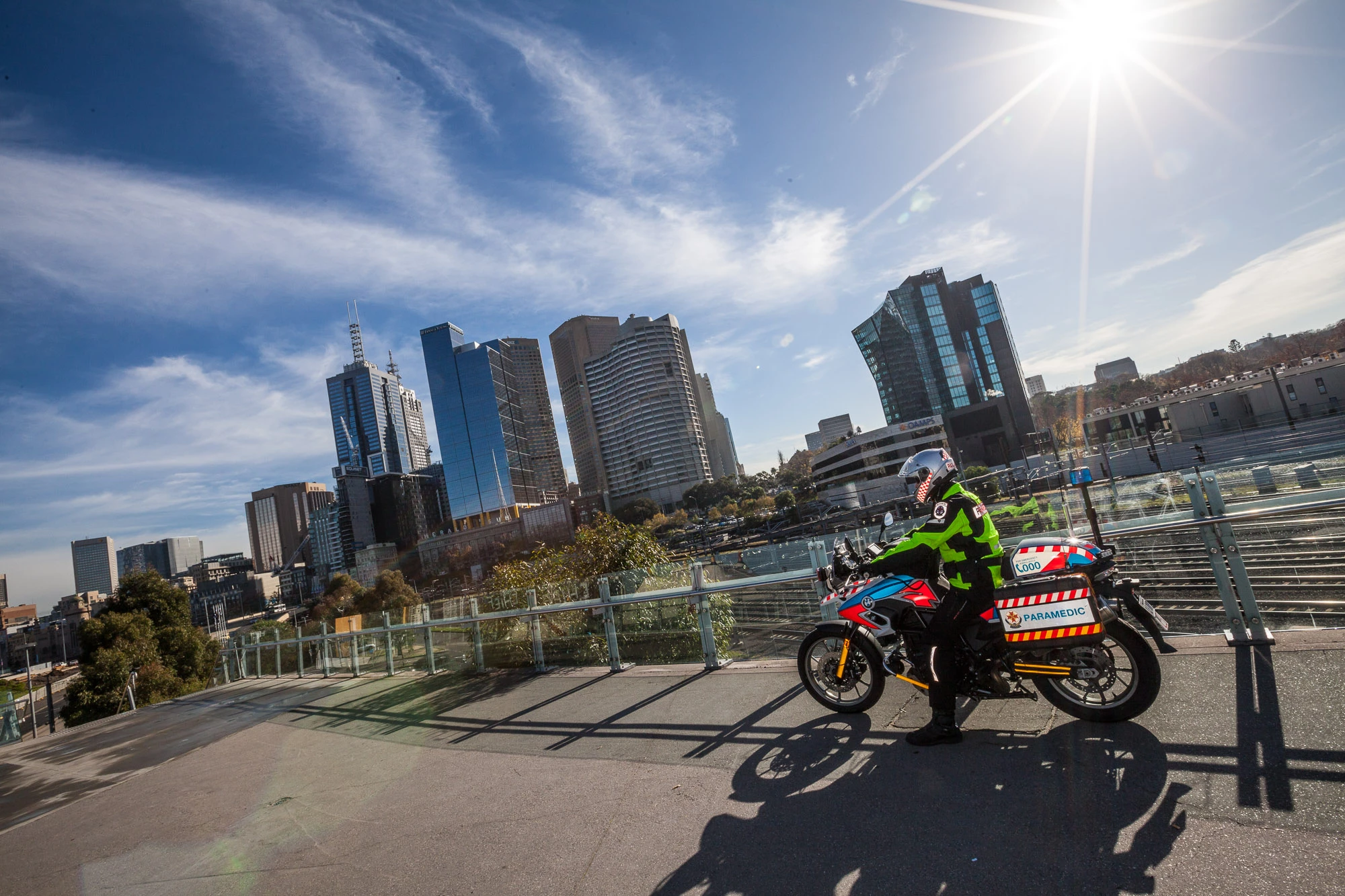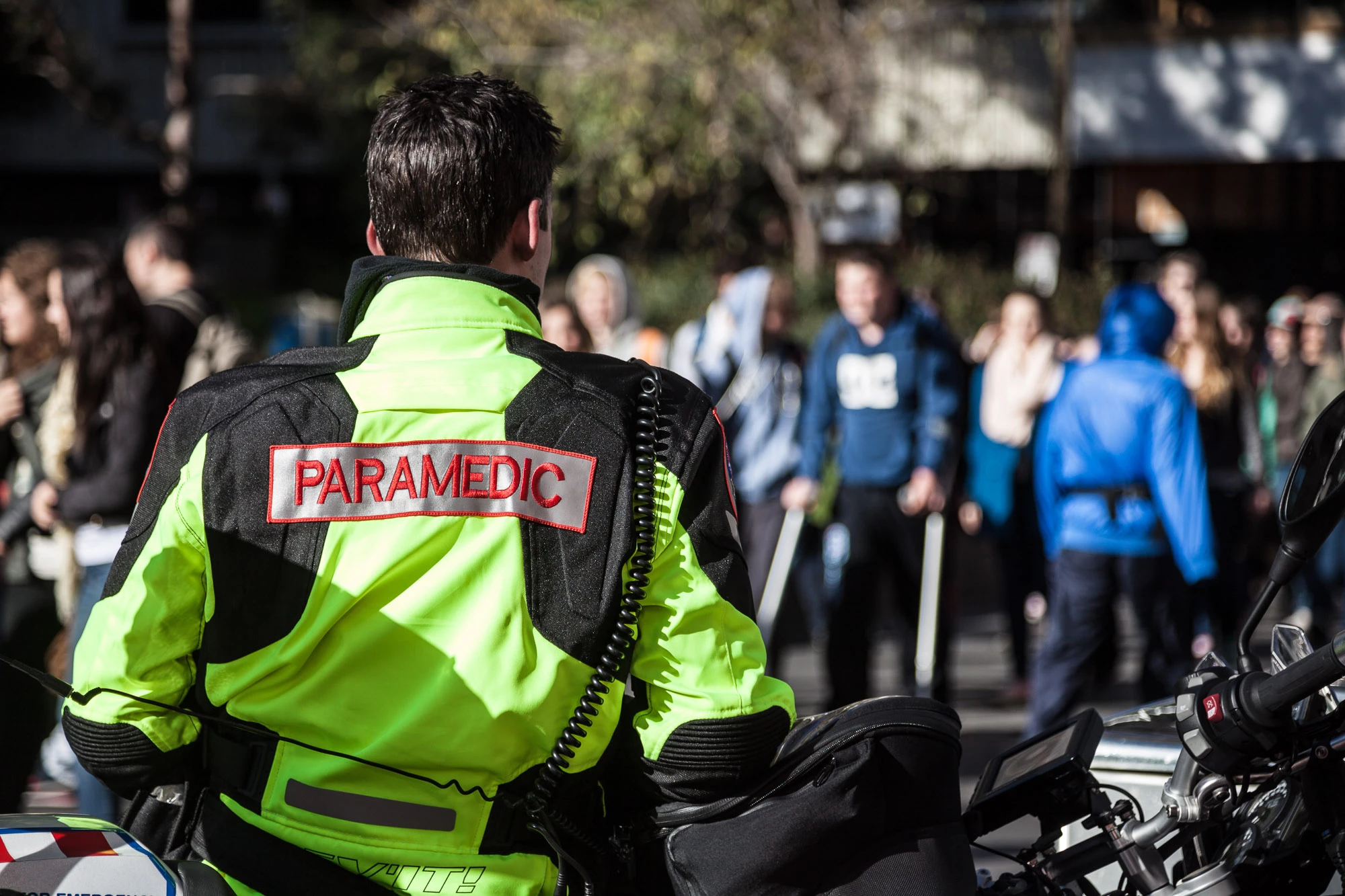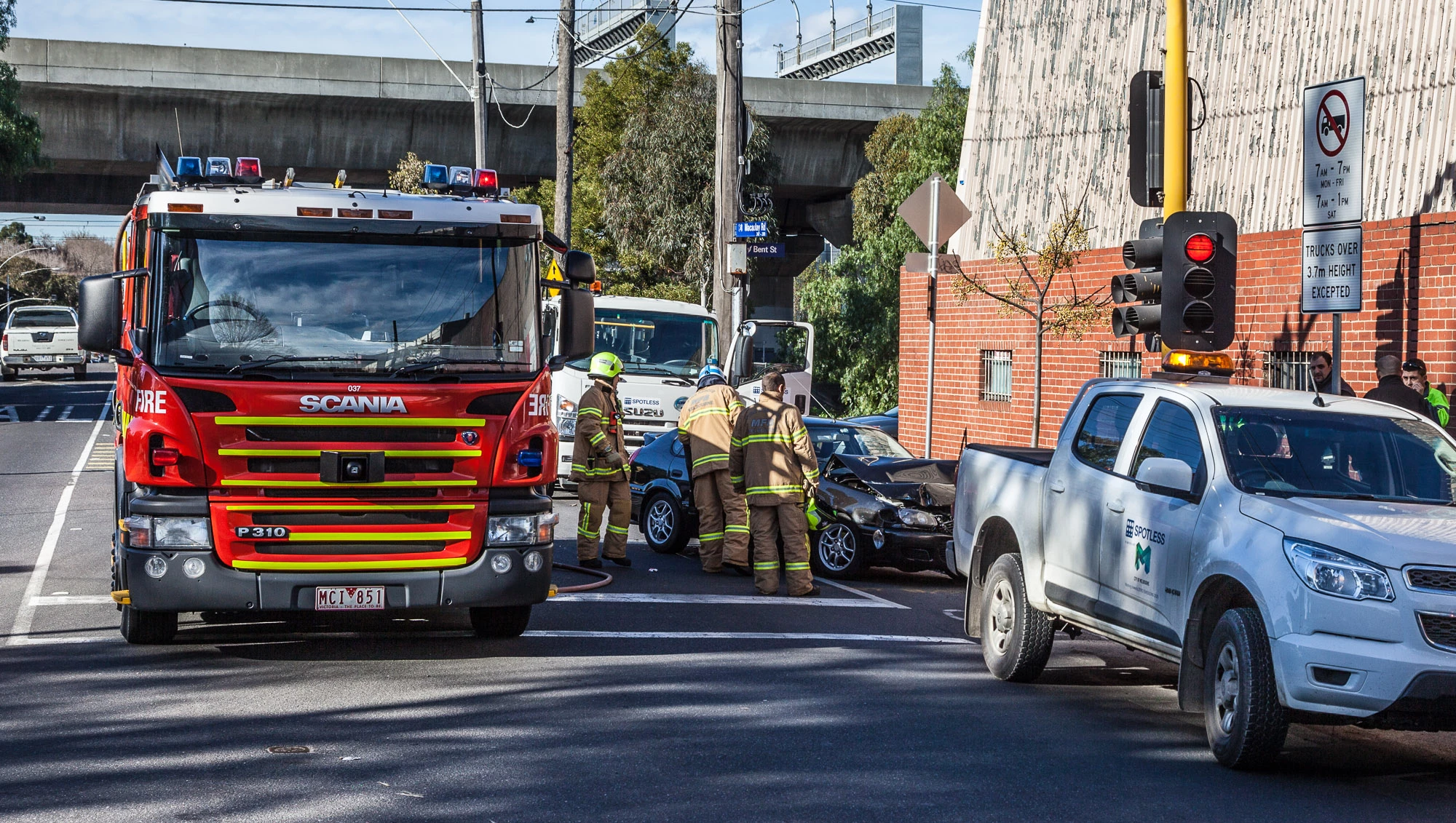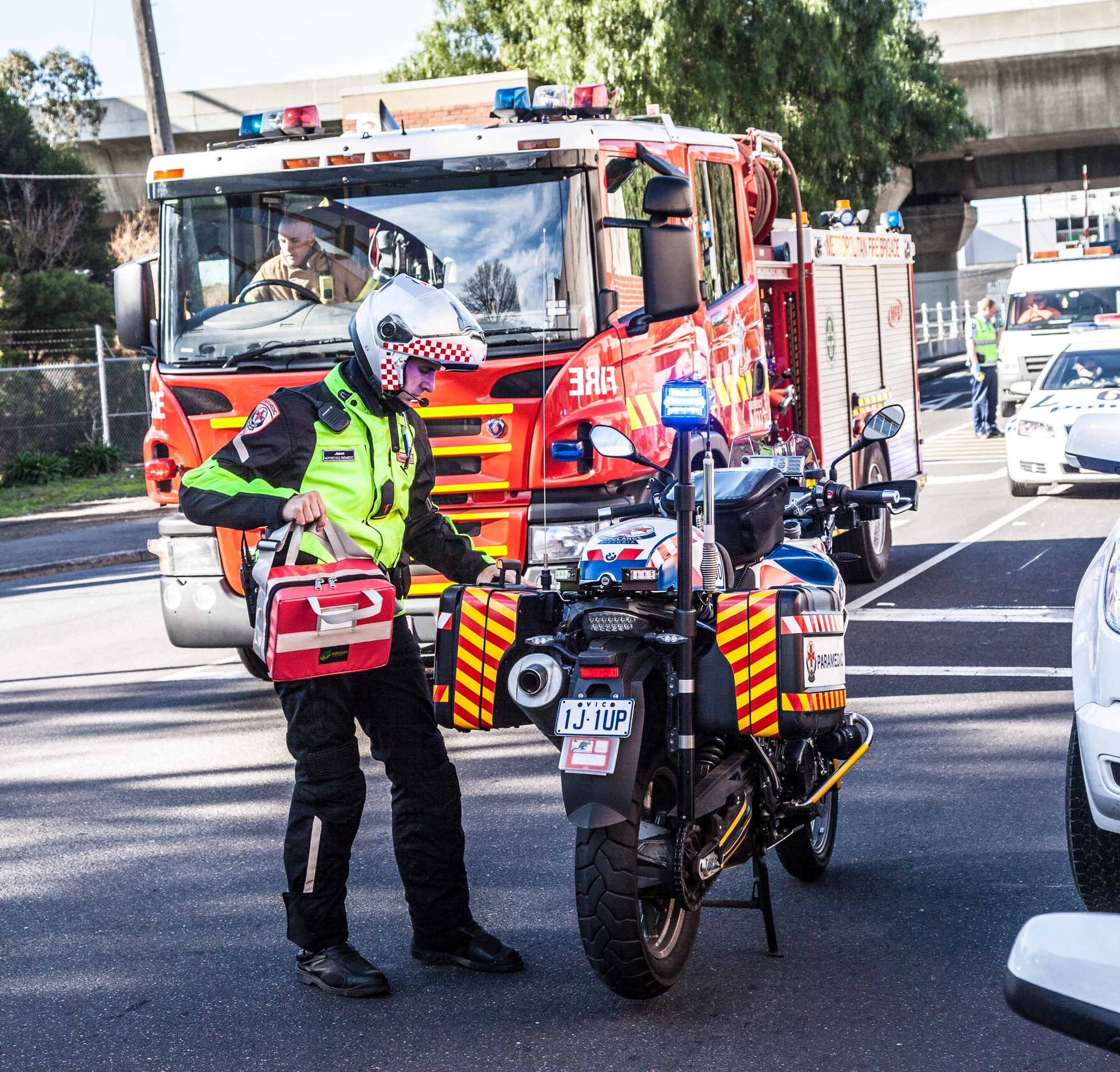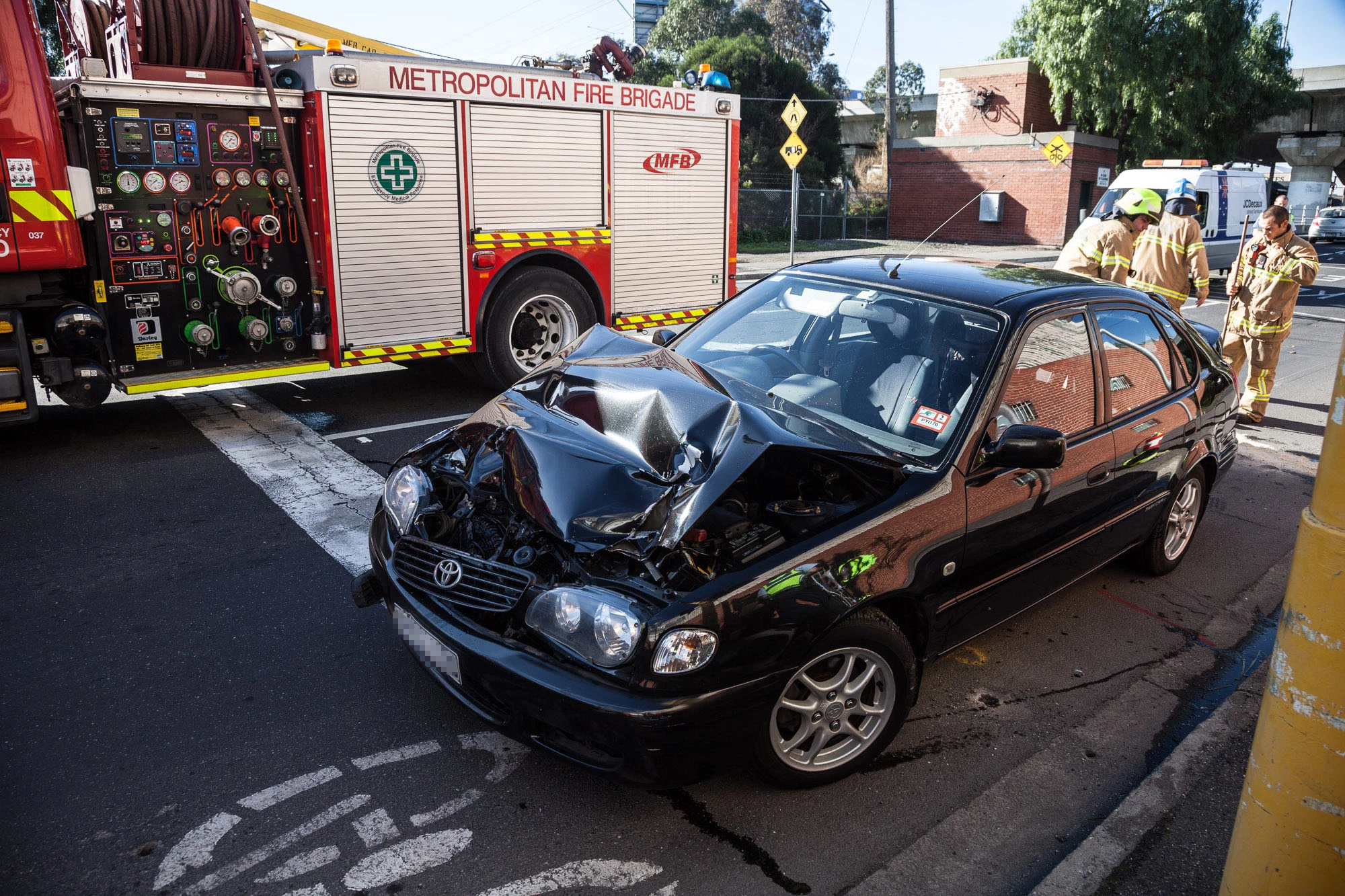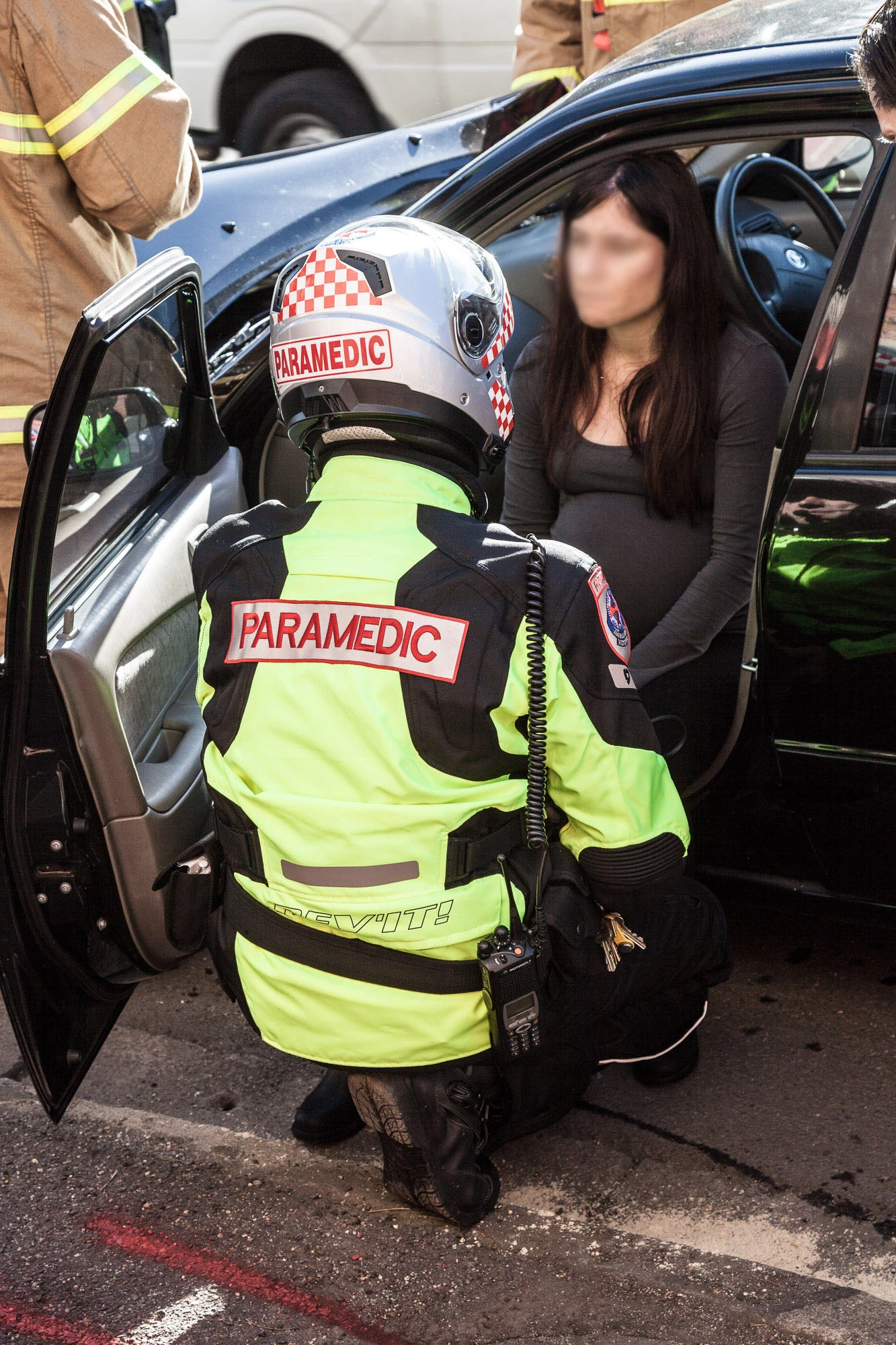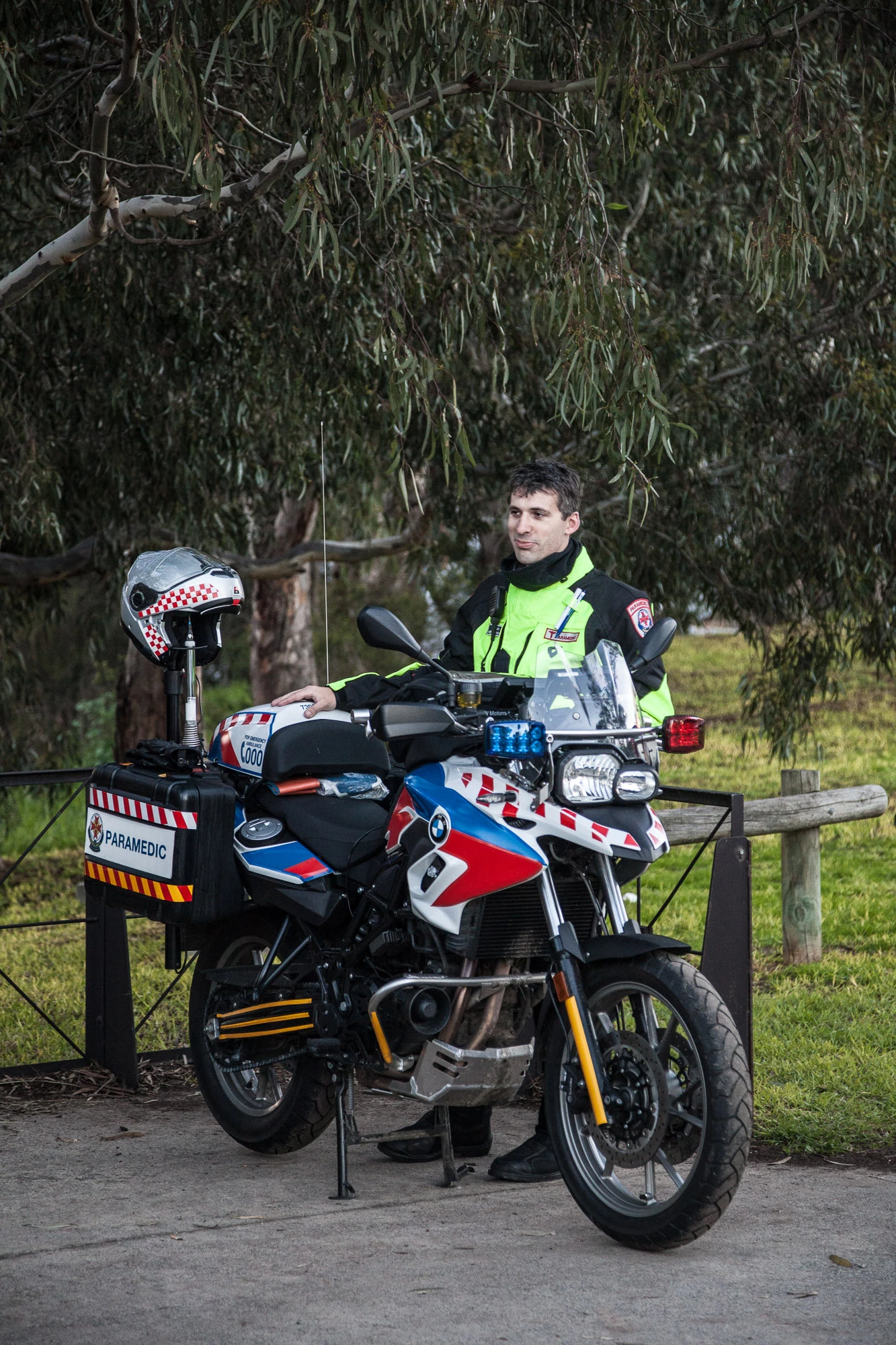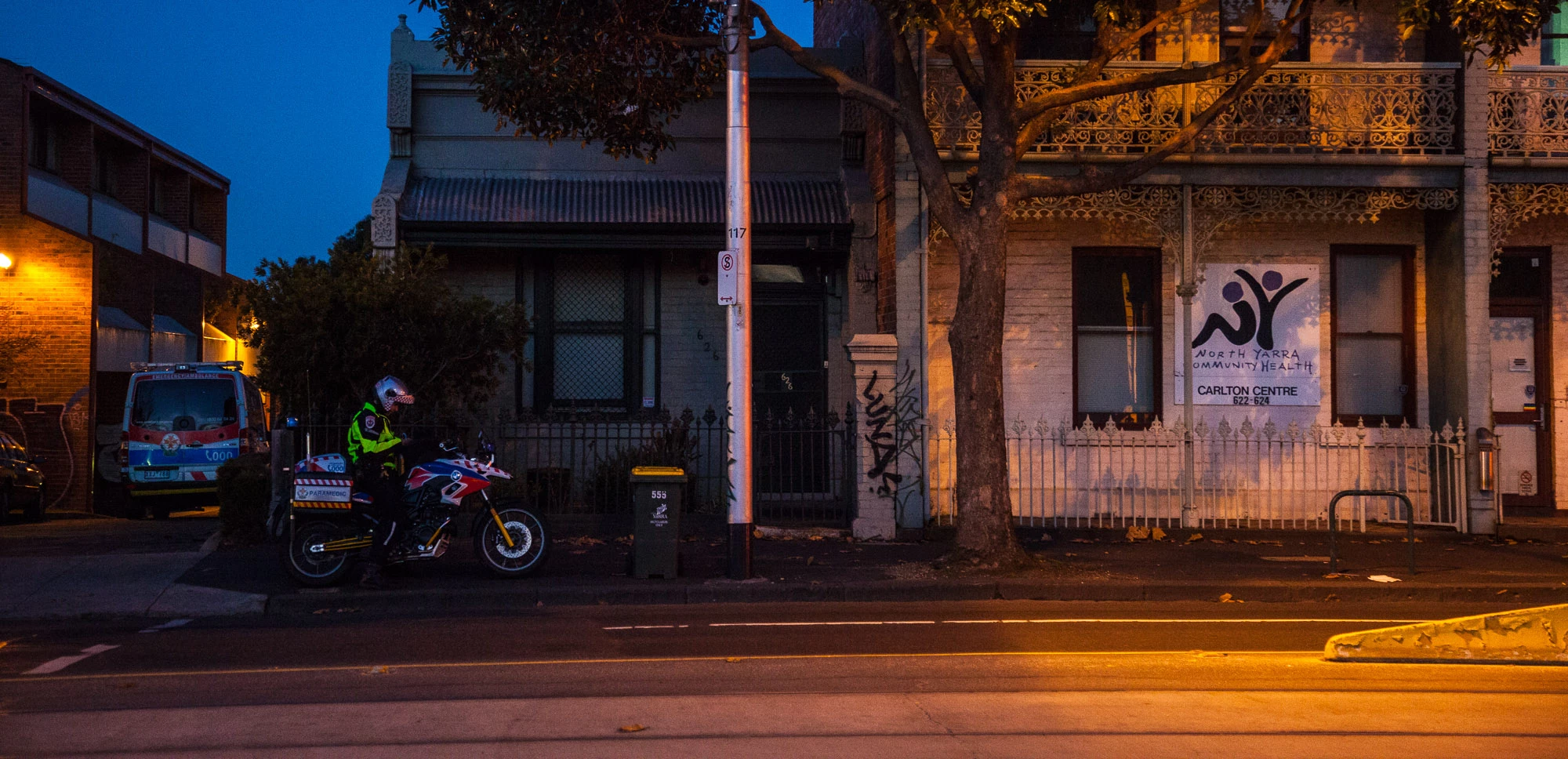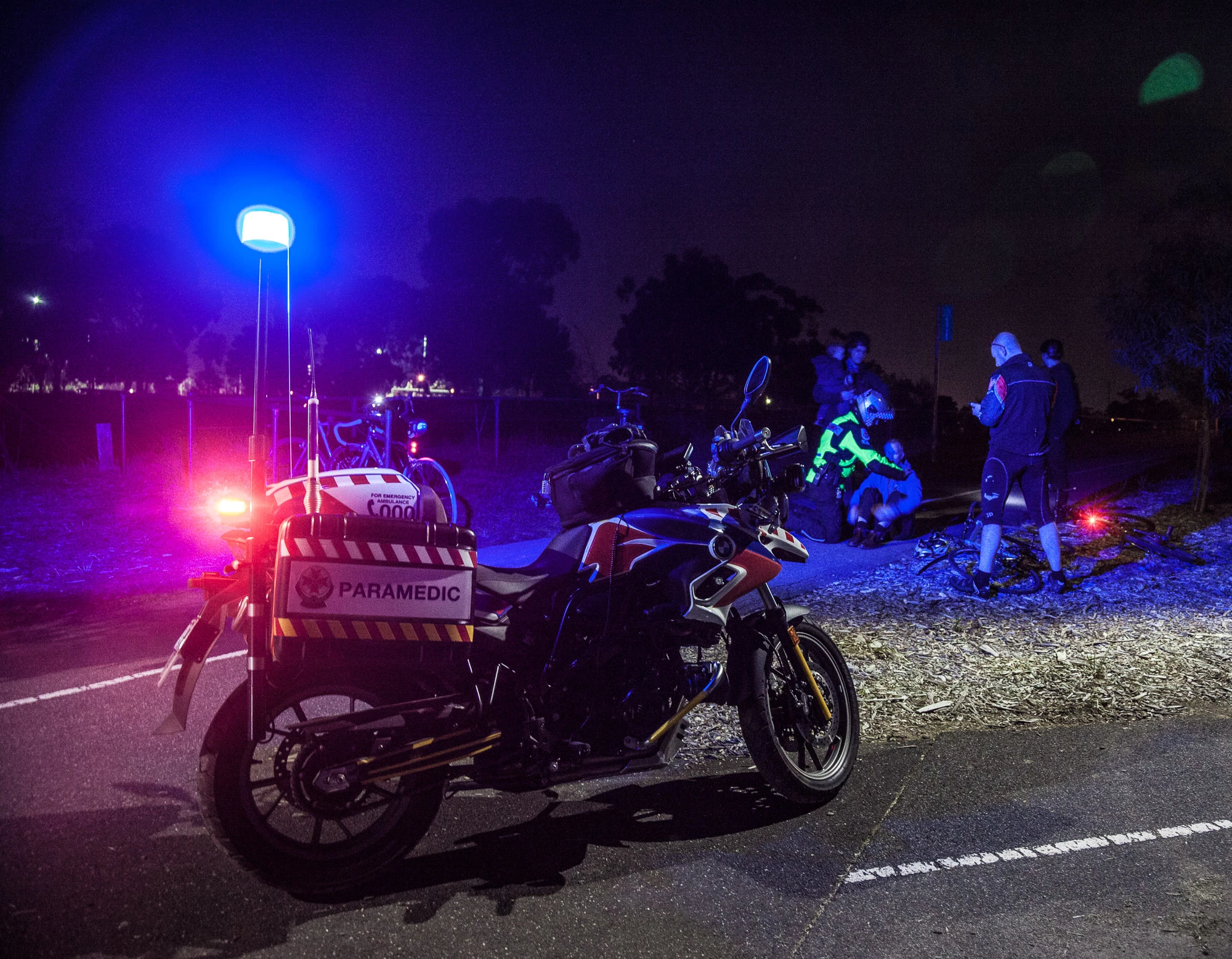Jason Learmonth is a paramedic with a difference. Instead of an ambulance, he gets around town on a motorcycle that's kitted out with almost every piece of clinical equipment an ambulance carries. It's part of a trial that's putting two of these machines on the road in Melbourne, Australia, for three years to discover whether the bike's ability to get into hard-to-reach places and move through congested traffic is useful enough to make it a permanent part of the Ambulance service. I followed Jason around for an afternoon to capture some of his extraordinary working day in pictures.
For the full story click through to the gallery. In the image captions, Jason tells us about his bike, his gear, the role of a motorcycle paramedic and a few cases we attended during the afternoon.

